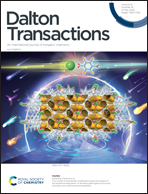Co-intercalation strategy of constructing partial cation substitution of ammonium vanadate {(NH4)2V6O16} for stable zinc ion storage†
Abstract
Recently, aqueous zinc-ion batteries have become a hot research topic in the field of grid-scale application, which can be attributed to their low-cost, aqueous electrolyte and dominant theoretical reversible capacity. Nevertheless, the lack of suitable cathode materials greatly hinders the development of aqueous zinc-ion batteries. In this work, we adopt a simple one-step synthesis strategy to prepare (NH4)2V6O16 with an intercalation of Na+ and H2O, which exhibits a novel crystal structure in which the ammonium ion, crystal water, and sodium ion co-locate in the V3O8 layers. The co-intercalation not only effectively enhances the binding energy between V–O layers to suppress vanadium dissolution but also successfully improves the structural stability to alleviate the structural collapse during the cyclic process. As result, (NH4)2V6O16 with the intercalation of crystal water and Na+ presents a remarkable reversible discharge capacity of 423.9 mA h g−1 after 90 cycles at 0.1 A g−1 with an excellent energy density of 350.3 W h kg−1 and demonstrates an outstanding specific capacity of 182.5 mA h g−1 at the high current density of 5 A g−1 upon 1400 cycles during the ultra-wide voltage window of 0.1–2.0 V.



 Please wait while we load your content...
Please wait while we load your content...